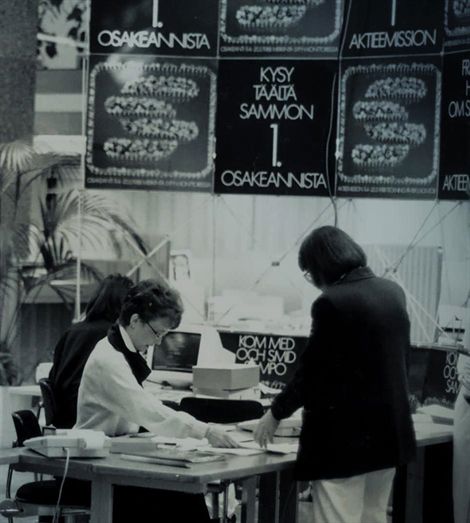History
The story of Sampo began in 1909. This brief history of Sampo encapsulates all of the relevant milestones of Sampo Group - from the early years prior to Finland’s independence right through to the present day.

Sampo was listed on the Helsinki Stock Exchange in 1988. The company from southwestern Finland became a publicly listed company that was looking for opportunities to grow throughout the country.

Sampo's insurance clients became shareholders in the limited company.
830,000
The new limited company Sampo had a staggering 830,000 new shareholders.
In October 1984, the top management of Sampo gathered in a meeting room in Helsinki's legendary Hotel Torni. The meeting kicked off a top secret project, which was only referred to with a code name ´Capital Suffiency´. The project was deemed so sensitive that its documentation was not even filed in the material available to management.
The project moved forward and at the end of 1984, the Board decided that the company's legal form would be changed from a mutual insurance company to a limited company. The decision was reached in a typical 1980s style: Finland was undergoing an economic boom and many companies had started to list themselves. As Sampo believed strongly in growth, it also realized this required capital.
The listing process took several years of preparation and Sampo examined other Nordic companies such as the Swedish company Trygg-Hansa in search of benchmarks. At the start of 1988, everything was ready: Sampo was listed on the Helsinki Stock Exchange on 14 January.
Sampo's shareholders initially amounted to over 800,000 individuals, which was more than any other limited company in Finland. Millions of stock certificates were printed. The amount of shares available for each client was determined by the total amount of insurance services purchased by the client.
The majority of the new shareholders had never owned shares in a company and the stock exchange was foreign territory to most people. When Sampo later adopted a book-entry system, some of the paper share certificates were unfortunately not transferred into the book-entry account and were instead passed into a joint account under Sampo’s name.
The 1980s were characterized by years of economic growth and the rise of the Yuppie culture, as well as the era of the welfare state. Child benefits, unemployment benefits and pensions were raised while working hours were reduced. Finland even enjoyed moments of full employment in this decade.